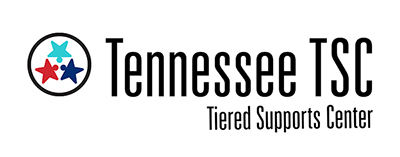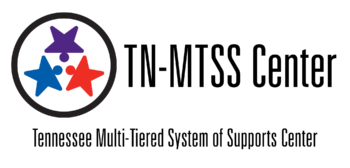What is RTI2-B?
RTI2-B stands for Response to Instruction and Intervention for Behavior. RTI2-B helps schools create a positive culture for students and staff with the goal of improving academic and behavioral outcomes for ALL students. All of these efforts require a shared commitment school-wide to teach and reinforce positive behavior. It also involves adopting an optimistic view that all students can learn appropriate behavior if sufficient and supportive opportunities to learn are provided. Furthermore, student and staff contributions to the school create a positive and proactive way to acknowledge, engage, and respect all stakeholders.
The purpose of RTI2-B is to empower educators to equip all students with the opportunity to meet high expectations regarding behavior and the support to reach every student. Also, students, families, and educators can work together to develop and contribute to a shared school vision. Tennessee Behavior Supports Project can help schools meet that goal.
Administrator Roles in RTI2-B
- Establish RTI2-B as a high priority within the school
- Support implementation efforts of RTI2-B
- Build RTI2-B fluency (attend trainings and professional development days)
- Establish a representative leadership team to lead implementation efforts (select capable team members, ensure team is representative of school staff)
- Allocate time and resources to implementation efforts
- Guide (rather than dictate) decision-making
- Foster communication among leadership team and school staff
- Facilitate leadership by modeling and reinforcing RTI2-B implementation
- Regularly attend and participate in RTI2-B team meetings
- Provide recognition to staff and the team for their RTI2-B implementation efforts
- Serve as the spokesperson to community stakeholders about the positive impact of RTI2-B
- Monitor and provide feedback to all staff about RTI2-B implementation efforts
(Adapted from: Colvin, G., & Sprick, R. (1999))
Benefits of RTI2-B
- Improves school climate
- Reduces problem behaviors
- Reduces office discipline referrals, suspensions, and expulsions
- Increases time for academic instruction
- Improves student achievement
- Improves student attendance
- Increases parent, student, and staff satisfaction
- Reduces staff turnover
- Reduces bullying behaviors
(Horner et al., 2014)
Starting RTI2-B at Your School
In order to implement RTI2-B successfully at an individual school level, a systematic approach is required. This includes four common components. The first component is administrative support to ensure the school is committed to implementation with fidelity. The second component is a strong leadership team led by the school’s RTI2-B team lead to coordinate implementation efforts. The third component is effective communication between the school team leader and the external coach to distribute the most current information and best practices. The fourth component is consistent data collection and use of data in problem solving and decision-making.
The administrator leads the work of the teachers, support staff, families, community, and students. A strong leader will also provide opportunities for leadership among those in the school, including students. The development of a RTI2-B school leadership team is one such opportunity.
If your school is interested in implementing the RTI2-B framework and would like training and support, please first obtain district support and have them contact Tennessee Behavior Supports Project for more information.

